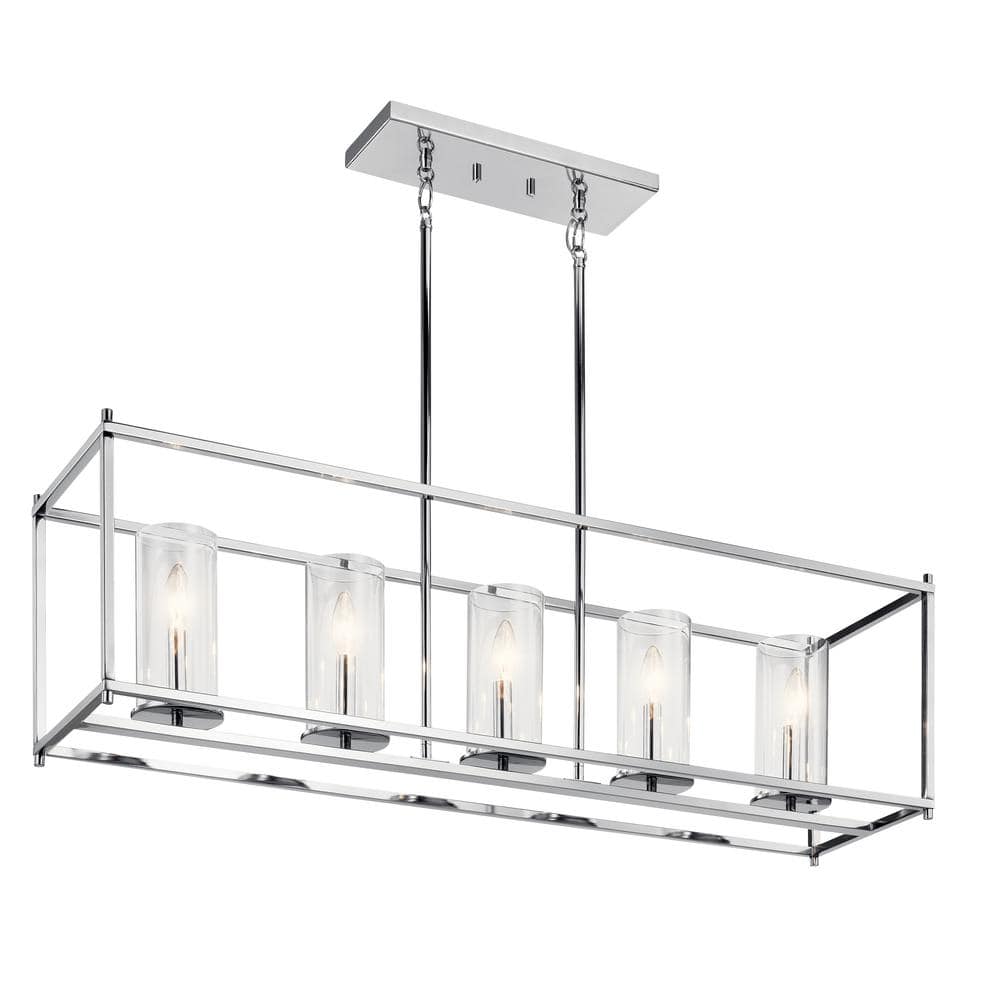KICHLER Crosby 5-Light Chrome Contemporary Candlestick Dining Room Linear Chandelier with Clear Glass Shade
Takes five B bulbs up to 60-Watt equivalent, not included. Contemporary chandelier features clean lines and metal accents. Perfect for over a dining room table or kitchen island.
The KICHLER Crosby 13.75 in. 5-Light Chrome Linear Chandelier comes with clear glass diffusers that provide bright illumination. This distinctive chandelier features a chrome finish that is sure to blend well with most types of decors. The steel construction makes it highly durable and easy to maintain. This minimalistic yet classy fixture is sure to accentuate your decor.
- Steel construction ensures strength and durability
- Uses five 60-Watt incandescent candelabra-base E26 type B bulbs (not included)
- Can be used with 36 in. standard-gauge chrome chain model 2996CH and 12 in. chrome stem model 2999CH (sold separately)
- Chrome finish complements any room decor
- ETL/CSA/UL listed for safe use in dry locations
- Comes with a kit that enables installation on sloped ceilings
- Clear glass diffusers offer bright, ambient lighting
Additional information
| Chain Length (in.) | 36 |
|---|---|
| Fixture Depth (in.) | 1 |
| Fixture Height (in.) | 25.75 |
| Fixture Weight (lb.) | 16 |
| Fixture Width (in.) | 41.25 |
| Maximum Hanging Length (in.) | 40 |
| Mounting Deck Height (in.) | 1 |
| Mounting Deck Width (in.) | 13.5 |
| Certifications and Listings | CSA Listed, UL Listed |
| Manufacturer Warranty | 1 Year |






by Nick
Easy assembly and looks great in our formal dining room.
by Paradise
Excellent product and looks great in my dining area.
by Helen
Was just what i expected and looks great in our kitchen.
by Jill
I love the simplicity of it. One bar is not even with the other ones however my handy person will fix.
by Skelly
This is a beautiful chandelier – simple & elegant. We absolutely love it!